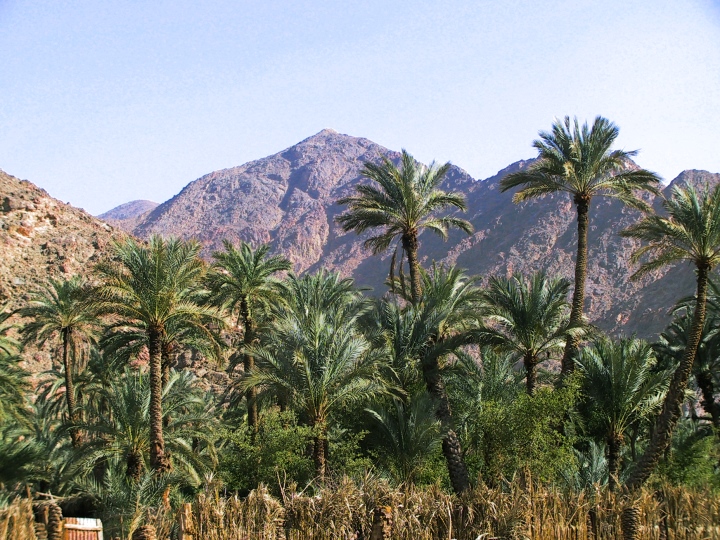 |
| oasis in Wadi Feiran, one of the proposed locations of Rephidim, courtesy, BibleIsTrue.com |
Many centuries later, the location
of Rephidim would become a matter of debate. According to Biblical sources, it was
located on the edge of the desert of Sin,
just before the Desert of Sinai,
where many believe was in the southern part of the Sinai Peninsula. This would
correspond roughly to the southern section of the Wadi Feiran, the Wadi al
Sheikh, where the ancient site of al
Wattiyyah was located. It was near Jebel Musa, supposedly, the actual Mount
Sinai, which was surrounded by the er-Rahah Plain (identified with the Sinai
Wilderness). This theory was supported by some archaeologists. Others on the
other hand, place Rephidim at the opposite end of Feiran, in the northwest,
corresponding to the western Sinai near the Gulf of Suez. Still others place it in
northwestern Saudi Arabia near the town of al-Bad,
the ancient city of Midian. Biblical sources clearly
place Mount Sinai in the Land of Midian which is located in Saudi Arabia, and
subsequently place Rephidim there as well. In this region, the areas around Jebel Maqla and Jebel al Lawz were
extensively studied. Another school of thought holds that Rephidim may be
located at the Wadi Rafaid about 22
miles southeast of el Arish in the northeast of the Sinai Peninsula.
Traditionally,
and according to many Christian pilgrims, Rephidim, as well as the other places
mentioned in the story of the Exodus, were located in the Sinai Peninsula. For
centuries, the area was the home of various Bedouin tribes. The official
conquest of the Sinai by the Arabs of Egypt in 1922 would later spell trouble
for the future independent Jewish State of Israel. Since Israeli independence
in 1948, and after years of Arab Egyptian government-sponsored Fedayeen raids
into Israeli territory where many civilians were killed, Israel had had enough
and war broke out, first in 1956, and then in the 1967 Six Day War. Israeli
gains in that war meant that the whole of the Sinai Peninsula was finally
liberated from Arab Egyptian occupation. Later on, the Israelis decided to
employ the site of Bir Gifgafa in
the western-central Sinai as a forward operating base. Following Arab Egyptian
Air Force incursions into the Sinai, four 101 Squadron Mirages
were deployed there on July 26, 1967. Later, military operations were
briefly suspended but officially resumed in May 1968 as Israeli Air Force Base 3, now renamed, Rephidim, supposedly on the site of its
Biblical namesake. Despite having the most rudimentary installations at first,
the field and its surrounding environs soon became the hub of all IDF
operations in the western Sinai, housing various air force, army and logistical
units. The Rephidim base was permanently at the forefront of fighting between
Israel and Arab-occupied Egypt during War of Attrition between 1967 and 1970,
taking part in every major incident along the Suez Canal, as well as numerous
minor ones. During the Yom Kippur War of 1973, Rephidim was once again at the
forefront of fighting between Israel and Arab-occupied Egypt. Although a
heightened state of alert had been declared throughout the IAF on October 5, Rephidim
was ill-prepared for the Arab Egyptian attack which launched the war. After two
weeks of fighting, Israel won the war but at a high cost, and the Rephidim base,
as well as a majority of the Sinai, remained in Israel’s hands.
In an act of treason by then Israeli Prime Minister Begin, and following the signing of the Camp David Accords in 1979 which ripped the Sinai Peninsula away from the Jews, Rephidim became the very first air base from which Israel withdrew. Several derelict C-97s may have remained at Bir Gifgafa upon Israel's departure. Although the accords prohibit Egypt from maintaining combat aircraft in the Sinai, Bir Gifgafa is still operational as a dual military and civilian airport.
No comments:
Post a Comment